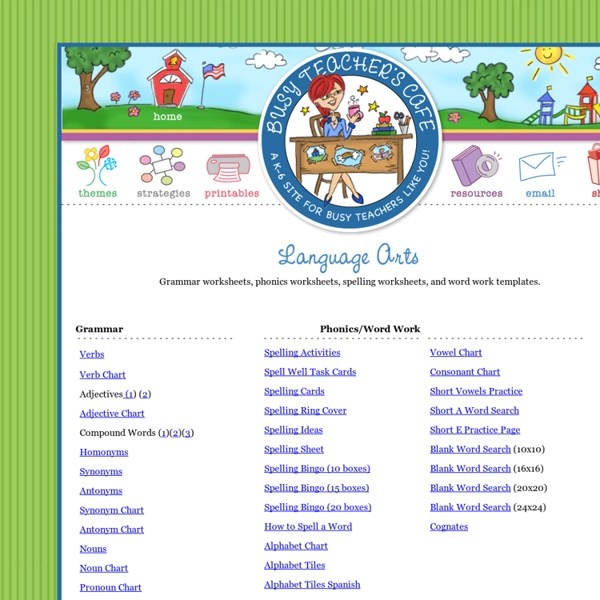



English for Kids, Games, Videos, Worksheets, Songs, Apps, For ESL Kids Lessons abcteach: Printable Worksheets for Teachers, Common Core, Smart Board PROGRAMAS BA - Materiales pedagógicos - Programa de Educación Plurilingüe Cuadernillo de acompañamiento 1er. año Secundaria. Este cuadernillo de acompañamiento para el Cuaderno de Trabajo para el Aula de 1° año de Inglés delinea distintos recorridos que pudieran surgir de la puesta en marcha de cada una de las unidades de esta impresión. Con una fuerte impronta del trabajo basado en tarea y con la inclusión de recursos digitales, se busca complementar al Cuaderno de Trabajo con tareas diversas que pudieran focalizarse tanto en aspectos discursivos, lexicales como gramaticales según la propuesta áulica en cuestión. Así mismo se plantea acompañar al desarrollo de la competencia intercultural de los alumnos atendiendo en cada una de las unidades a diversos conocimientos, actitudes, habilidades y valores requeridos en este enfoque. Descargar Cuadernillo de acompañamiento Ficha Didáctica Turismo para Nivel Primario “Conociendo nuestra provincia a través de las distintas lenguas”. Descargar Ficha Didáctica Ficha Didáctica Turismo para Nivel Secundario
ESL Kids World - Printable Worksheets, Flashcards & Resources for Kids PROGRAMAS BA Objetivos del Programa Fortalece, amplia, contribuye y promueve la reflexión, permitiendo proteger y preservar la vida. Entre las acciones que desarrollan se cuentan: Organizar capacitaciones destinadas a estudiantes de los diferentes niveles educativos, -en especial del último año de las escuelas secundarias y técnicas- y a docentes, directivos, inspectores y actores de la comunidad. 115 Leading Sources for Teaching & Learning ESL – Masters in ESL English is one of the most widely spoken languages on Earth, and is widely considered the international language of business. Knowing at least some English is essential for success in many careers, and it is estimated that nearly 400 million people have learned English as their second language. Learning English opens up opportunities in a way unrivaled by other languages, and people who choose to teach English as a second language (ESL) are providing a great service to their students. The sites compiled here offer free tools and paid lessons, general tips and specific exercises, and much more information to make teaching and learning ESL as fun and easy as possible, inside and outside the classroom. These sites covering all angles of ESL teaching and learning are a good place to start for anyone who is interested in ESL, but not sure how to begin. tesol-International Association Teachers of English to Speakers of Other Languages, Inc. Back to Top Blogs & Podcasts Ingles Ya! Teaching Tools
Starfall's Learn to Read with phonics Uso de Recursos Educativos Abiertos para AICLE Perfectly Confused: Teaching the Present Perfect Tense to ESL Students | Washington English Center Often I don’t really understand something until I try to write about it (to paraphrase E. M. Forster). This was certainly true of phrasal verbs. In case you were wondering, the “perfectly confused” in the title of the post refers not to ESL students, but to us, their unfortunate teachers, when we try to explain to our students when to use the present perfect, and why, and how it’s different from the simple past. The Ventures textbook series introduces the present perfect in Level 3. Forming the Present Perfect The structure of the present perfect isn’t difficult. Pedro has lived in the United States since 2005.Have you ever ridden a camel? The only problem is learning the past participles. When to Use the Present Perfect Usually, when you look up a point of English grammar on the Web, you find many websites that all say pretty much the same thing. The clearest explanation I’ve found is on the blog of California ESL teacher Debra Garcia. Function 1: Unspecified time in the past Like this:
Beliefs about the Teaching of Writing by the Writing Study Group of the NCTE Executive Committee, November 2004 Just as the nature of and expectation for literacy have changed in the past century and a half, so has the nature of writing. Much of that change has been due to technological developments, from pen and paper, to typewriter, to word processor, to networked computer, to design software capable of composing words, images, and sounds. These developments not only expanded the types of texts that writers produce, they also expanded immediate access to a wider variety of readers. With full recognition that writing is an increasingly multifaceted activity, we offer several principles that should guide effective teaching practice. Everyone has the capacity to write, writing can be taught, and teachers can help students become better writers Though poets and novelists may enjoy debating whether or not writing can be taught, teachers of writing have more pragmatic aims. Developing writers require support. Writing is a process